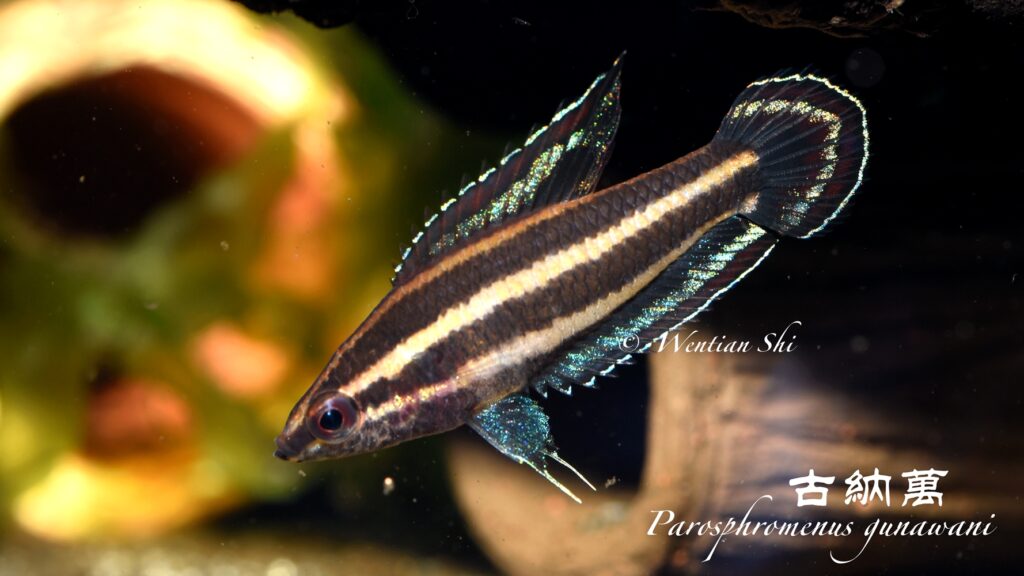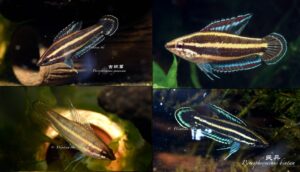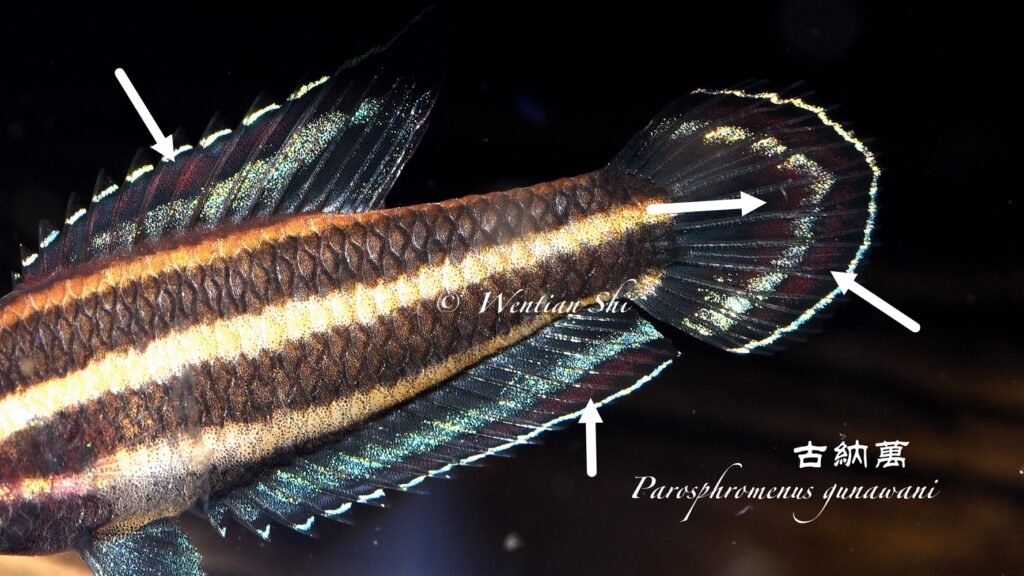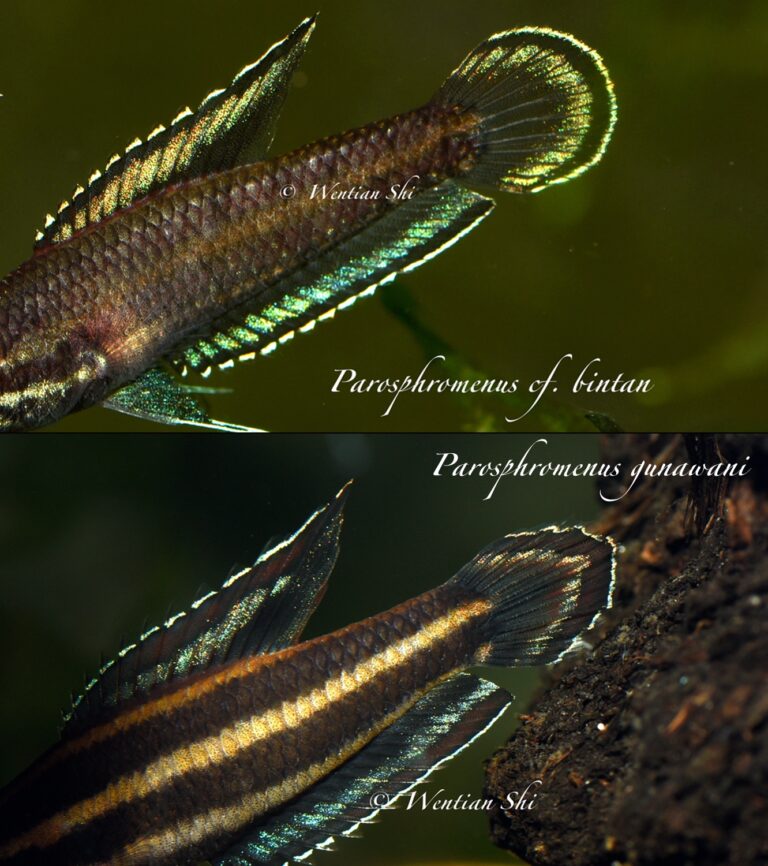Parosphromenus gunawani has for a long time been a bit of a ‘mystery’ to many of us. In fact we only had one photo of P. gunawani that with 100 precent showed it. And as it appeared close the many cf. bintans that is seen in imports around the world – and we also see many fish labelled P. gunawani in shops etc – the questions are often raised if a particular fish was or was not the real P. gunawani.
Parosphromenus gunawani is listed on IUCN Red List as Critically endangered. For this reasons, as well as the above mentioned reason, we have for some time wished to bring more clarity to this species, and if possible bring it into our breeding programs with private keepers.
In 2023 Wentian Shi went on an expedition and was able to re-find P. gunawani in the habitat from which the holotype came. This has enabled both a more precise description which will be helpful in identification, – but has also enabled it to now be in a breeding program in Europe, already with success.
It will be our goal to continue to develop this success and distribute the species P. gunawani further as secure as possible.
We bring here a detailed description of how to determine the difference between P. gunawani and p. cf. bintan.
For this we will quote W. Shi from ‘Journey to the water’

(Quote)
1: the inner part of the blue band on caudal fin has solid dark red color. This is very correct. This red color by gunawani is very solid it is more close to alfredi/tweediei/phoenicurus, just less bright and less intensive. But the red will not disappear in tank and can be easily seen by raw eyes and recorded by camera.
Not like those cf. bintans which might have some very weak red patches that is hard to record. And of course also distinct from real bintan from Bangka, which is pure black/blue
2: the blue band of caudal fin is narrow. This is one standard offered by original paper, but after careful check of materials, I think this one is less reliable. Some gunawani indeed have narrow band, some not so narrow. I dont consider this as a reliable way.
3: the part between two blue bands is PINK, not black
 This is THE EASYIEST one. All those “cf bintan/bintan” have a black subdistal band (the part between the blue margin and blue band of the fins). Gunawani has a very distinct pink-rose color on this part. Both original samples published in 2012 and our new materials show this constantly. And it is very easy to recognize.
This is THE EASYIEST one. All those “cf bintan/bintan” have a black subdistal band (the part between the blue margin and blue band of the fins). Gunawani has a very distinct pink-rose color on this part. Both original samples published in 2012 and our new materials show this constantly. And it is very easy to recognize.
So, now we know the difference. Gunawani is NOT a blue-black species, It has blue bands and pink edges on dorsal-anal-caudal fins and dark red inner part of caudal. But the location of gunawani is very very very difficult to reach. Most fish sold as gunawani are cf. bintan…… (end quote)


Lorem ipsum dolor sit amet, consectetur adipiscing elit. Ut elit tellus, luctus nec ullamcorper mattis, pulvinar dapibus leo.


